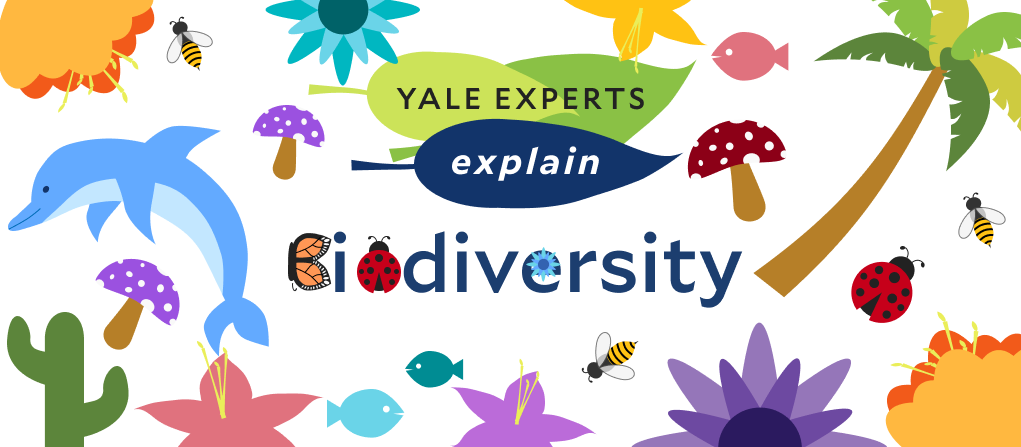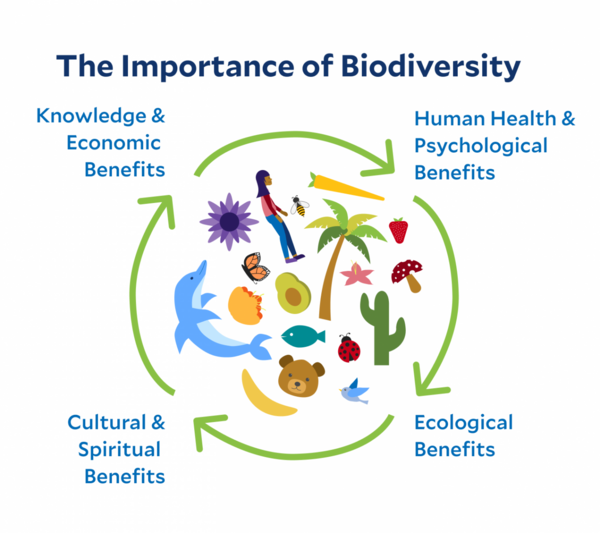
August 17, 2020
Renowned biology and ecology experts Tom Lovejoy and Os Schmitz talk about one of planet Earth’s most important features.
What is biodiversity?
Biodiversity – ‘biological’ (living) and ‘diversity’ - is the variety and variability of all life on Earth, including plants, animals, bacteria and microorganisms, and humans. The concept was introduced in 1980 by renowned conservation biologist Thomas Lovejoy (BA ‘63; Ph.D. ‘71), who is now the University Professor in the Environmental Science and Policy department at George Mason University. Lovejoy explains that biodiversity gives life on Earth an unimaginable variety.
“A single animal or single plant is more complex than anything else in the universe,” Lovejoy says. “If you looked at one chromosome from the cell of a mouse, you would have more information than all editions of the Encyclopedia Britannica combined.”
Os Schmitz, the Oastler Professor of Population and Community Ecology at the Yale School of the Environment, finds it helpful to think of biodiversity like an orchestra. “You’ve got a variety of different instruments,” Schmitz says. “You’ve got string instruments, woodwinds, brass, and within each of those groups, you also have different shapes and sizes of instruments that function together to create a wonderful harmony. That’s the kind of diversity that we’re interested in with species on Earth. There are groups of species we call carnivores, herbivores, omnivores, or microbes, and then within those groups are also varieties of different species with different sizes and different abilities.”
What are the benefits of biodiversity?
Lovejoy explains that this “collective variety in nature” is integral to the heathy functioning of ecosystems. “All of these different individual species interact with one another and contribute to natural systems,” Lovejoy says. “Even something as domestic as a backyard lawn is composed of many, many species doing a lot of different jobs. Every time you look around, there is some sort of ecosystem service going on.”
Ecosystem services are the environmental, economic, social, cultural and spiritual benefits that are made available due to complex species interactions on Earth. We as humans rely on these benefits every single day. Biodiversity is responsible for the production of oxygen, the filtration of natural drinking water, the fertility of our soil, the pollination of plants that allow us to produce crops, the protection of coastlines from erosion, and more. Lovejoy estimates that these services provide trillions of dollars of benefits to the human economy.
Biodiversity also provides social and emotional benefits to humans. Spending time in nature or green spaces like parks and beaches supports mental health. Many individuals also associate positive memories as well as their heritage and ancestry with particular species or places in nature. This can be as unique and personal as a childhood association with a summer camp or as deep and embedded as places of worship. “A lot of indigenous cultures revere pieces of land and wild spaces because of their cultural history,” Schmitz says. “These places are where their ancestors existed, and it gives people a sense of place and that sense of belonging.”

On a larger scale, biodiversity offers ‘knowledge benefits.’ Lovejoy says that “every species is constantly exploring and experimenting with new innovative solutions to biological problems,” and suggests that we have much to learn from the ways that species respond to disruptions and disease. He points out that biodiversity is responsible for a number of life-saving medical advancements, including vaccinations.
The innate environmental benefits of biodiversity could also aid in reducing global temperatures and fighting climate change. “One of the great services that we can get from nature could be pulling a lot of carbon back out of the atmosphere by restoring natural environments like coastal wetlands or engaging in reforestation,” Lovejoy said.
What are the threats to biodiversity?
A 2019 UN Report found that 1 million animal and plant species are currently threatened with extinction, many within decades, which is more than ever before in human history. Our experts explain that this unprecedented loss is caused in no small part by human activity.
As human populations increase, we expand into undeveloped land and convert and exploit it to match our own space and resource needs – completely disrupting the species that live there. The balance of the ecosystem is thrown off when humans engage in deforestation – the permanent removal of trees – extraction of water, and displacement or overhunting of species. “We jeopardize the sustainability of the whole ecosystem if we are not careful about how we harvest and destroy the homes of important species,” Schmitz says.
Air and water pollution caused by agriculture and industry affect the ability for ecosystems to function and grow properly. Climate change – including increasing temperatures and the higher incidence and frequency of extreme weather events – is another human-caused threat to biodiversity. “Global warming becomes problematic for species because they have a hard time coping with the warming temperatures, and that in combination with losing their homes is a one-two knockout punch,” Schmitz says.
A loss in biodiversity results in losses of the services it provides us, ultimately threatening our ability to breathe, eat, and survive. “We need to be more humble and realize that we alone can’t make it alone,” Schmitz says. “Our technology won’t save us … we need life’s diversity on this planet to help us live and thrive.”
What can individuals do to protect or enhance biodiversity?
There are both ethical and practical ways for individuals to support biodiversity. “Everyone can contribute to the solution,” Lovejoy says. “It’s time to embrace the nature of biological diversity and end up with a better future for ourselves and future generations.”
Schmitz suggests getting involved in your local community to plant trees or start a garden with species that are well-suited to live in the climate of your local area. As a consumer, consider the possible impacts of your purchasing habits and look for biodiversity-friendly indicators such as certifications that assure sustainable management, sourcing, and harvesting practices.
Thinking more broadly, our experts suggest “turning back to nature.”
“My recommendation for protecting biodiversity is for everyone to re-acquaint themselves with nature,” Lovejoy says, “Not in the form some big required study that you’re going to have to take an exam on, but just open your eyes and your ears to what’s around you.” Take time to learn about the phenomena of nature, like the ocean crossing songs of humpback whales and the intergenerational migration of monarch butterflies. Reflect on the ways you relate to and rely on nature, and perhaps think more appreciatively of the species who benefit you daily.
What is Yale doing?
Yale’s campus is home to Urban Meadows, designated areas mowed only two to three times a year to promote the natural regeneration of grass, native plants, and wildflowers. While providing important habitat for native species of plants and animals, these spaces encourage a diversity of plants and flowers where bees and butterflies can pollinate and serve as a feeding and nesting habitat for migrating birds. Yale Sustainability also has a forthcoming Biodiversity Plan, which will continue to inform the Land Use Planning Guidelines of the university to ensure human health, improved biodiversity, and enhanced environmental quality.